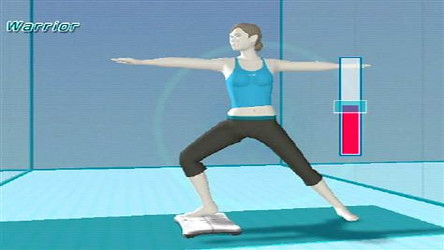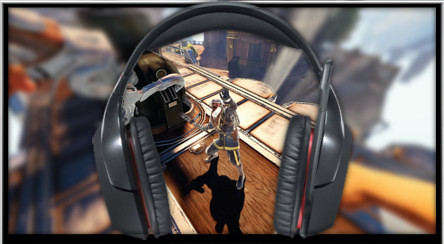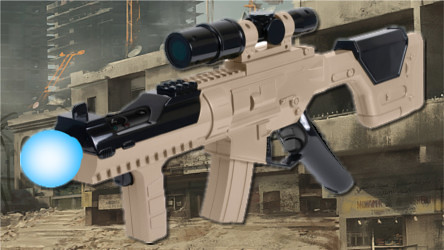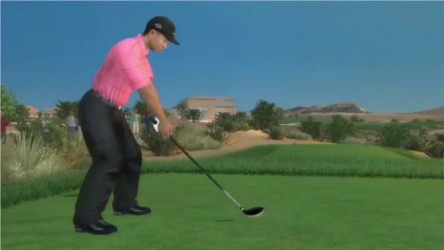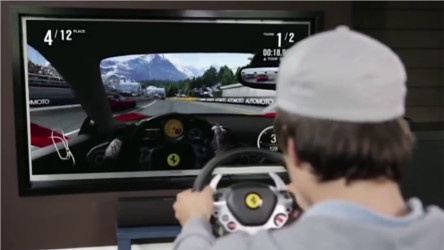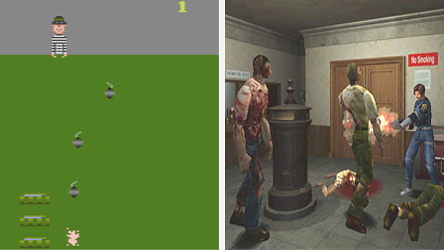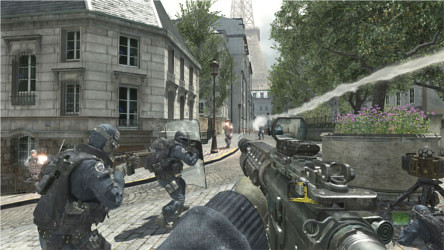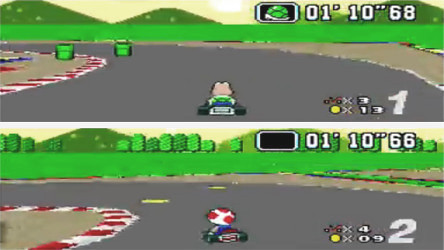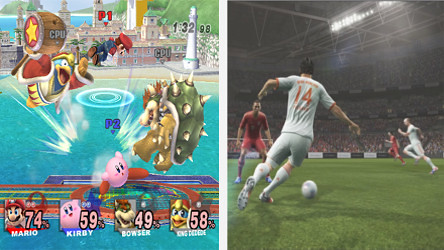Video games are very complex experiences. They involve paying attention to virtual objects, vehicles and characters; all working together to offer both a challenge and a narrative. As a result they provoke a wide range of emotions. Games can make us anxious and scared, but also relaxed. They can help change boredom into excitement, and sadness into happiness. They seem to be able to change how we feel. But how reliable are they? Can we use games to switch our emotions at will? Can we use them to control our mood?
One area of research that can help us understand the relationship between video games and emotions is Mood Management Theory. According to it, people tend to use media to improve how they feel. They can do this, for example, by seeking more positive and arousing content. Media can also distract people from the emotions, thoughts and memories that are making them feel bad. Research on this area has found some support for the potential of video games for mood repair. Let’s analyze this studies more closely.
Evidence suggest that there’s a positive relationship between how many actions a player executes in a game and how good he or she feels. For example: Playing a Wii boxing game with motion controllers was followed by a reduction in negative mood, which didn’t happen for those who played a flash boxing game with less actions available and through the use of a keyboard (Chen & Raney, 2009). This seems to suggest that titles involving additional and more realistic user actions are better for the reduction of negative mood. But there are additional differences between both games (like graphics and sound quality) that could explain the users’ change in mood. Another experiment, however, found more conclusive results. People who watched a warplane simulator (Lock-on: Modern Combat) in autopilot showed less improvement in affect than those who had to control the speed and direction of the plane (with a flight stick and a throttle), which also showed a bigger increase on affect than those who additionally had to control landing gears and flaps as well as air, wheel and parachute brakes (with a keyboard and a mouse) (Bowman, 2012). This indicates that, to promote positive affect, some demand for the intervention of the user is better than none. But when the task becomes too demanding, it starts having negative effect on mood. So if you need to feel better after receiving some bad news, playing a game would probably be more effective than just watching an un-narrated gameplay video on YouTube. However, this wouldn’t necessarily apply to reviews or “Let’s play” videos. After all, these type of content includes expert analysis as well as jokes made by successful entertainers, increasing their chances of influencing the user’s mood. Also, we wouldn’t recommend playing games with unusually complex controls and interfaces like “Dragon Ball Z: Budokai Tenkaichi” or “Master of Orion”, unless you already know how to play them pretty well.
 |
| Playing a confusing game might not be the best way to improve your mood. |
A recent study could help us understand why interactivity tends to make people feel better. This experiment found that playing Pac-Man was better at reducing depressive mood than watching a clip of the game or just waiting (Rieger, Frischlich, Wulf, Bente, & Kneer, 2014). Interestingly, it was also better at reducing involvement towards a previously seen sad movie clip (Rieger, et al. 2014). This result is congruent with (but it doesn’t prove) the idea that interactivity improves mood by distracting the user from negative content. So if you find yourself experiencing a deep feeling of sadness (and social support isn’t available at the moment), try playing a game that can capture your attention for long periods of time. Whether it is a puzzle or an online racing game, it might help you avoid negative thoughts or memories that would only have made you feel worse.
Research has also found support for a positive effect of interactivity on arousal. People that chose to spend a break playing a video game instead of just waiting, experienced a higher increase in self-reported arousal (Reinecke & Trepte, 2008). It’s possible though that those who choose the game had better expectations towards the improvement of their mood, so a placebo effect can’t be ruled out as an explanation. Nevertheless, another study found more solid evidence of the relationship. This experiment found that playing Pac-Man was better than watching a clip of the game at increasing self-reported arousal but not electro-dermal activity (a physiological measure of arousal) (Rieger, Frischlich, Wulf, Bente, & Kneer, 2014). This suggest that interactivity can make users’ feel more energetic, but won’t necessarily trigger the physiological responses associated with it. Interestingly, studies on movies have found that sad content is an effective way to increase arousal, and that it works better than comedy (Rieger, Reinecke, Kneer, Frischlich, & Bente, 2013; Rieger, Bowman, Frischlich, & Bente, 2014). So playing an emotional interactive experience like the ones provided by “Final Fantasy IV” or “Shadow of the Colossus” could be a good way to make an under-stimulated individual feel more excited. However, if someone is feeling both bored and depressed, the use of sad content could make things worse. In this case, games with less emotional storylines like “Mario RPG” or more action oriented like “Marvel vs. Capcom” or “FIFA” would be a better choice.
 |
| Emotionally intense content seems to make people more excited. |
As we have seen, there’s enough evidence to believe that interactivity has a positive effect on people’s mood. But this doesn’t necessarily mean video games are always reliable as a source of mood repair. For example: While Pac-Man has been shown to decrease depressive feelings, it hasn’t been found as effective in the promotion of a happy mood (Rieger, Frischlich, Wulf, Bente, & Kneer, 2014). On the other hand, titles like Hitman: Blood Money (a third person stealth game), Call of Duty 2 (a war-themed first person shooter) or Madden: 2007 (an American football game) aren’t particularly useful for the reduction of sadness or hostility (Ferguson & Rueda, 2010). One way to explain this is that other game variables are affecting how the users feel. Maybe Pac-Man is challenging enough to distract people from negative memories, but the animation and sounds aren’t enjoyable enough to promote positive affect. And while Hitman and Call of Duty are known for their action packed missions, they also tend to include sad music and storylines that we wouldn’t recommend for players feeling depressed.
 |
| Some games can be surprisingly ineffective at reducing negative mood. |
One of the lessons we can obtain from these studies is that providing different and interesting opportunities to interact with the game is a good way to keep the players happy and excited. Megaman X, for example, achieved this by letting the players jump from walls as well as charge their weapon. In Tenchu: Stealth Assassins, the user could hide behind a wall to avoid detection, turning an otherwise passive element like the environment into an important tool. Actions doesn’t even have to be important for the in-game objectives. Creators of Grand Theft Auto V, for example, included simple features like being able to switch between radio stations, turn the lights of the car on and off or even make rude gestures to other drivers as a way to prevent the players from becoming too bored during long road trips. The demand for user intervention should be limited though. As we have seen, overwhelming controls can have a negative effect on mood. Nevertheless, we should remember that this didn’t prevent the first person shooter “Arma II” to gain a considerable amount of followers. This reminds us of how important it is to know your target audience, the experience they want and what they are willing to overlook in order to obtain it.
 |
| Simple actions, like playing with the lights of a car, prevent users from switching their attention away from the game. |
A final advice would be to avoid any situation that takes the control away from the user. A good example are quick-time events. This technique (introduced in the Shenmue series and included in recent games like the new Tomb Raider) consists of triggering a complex set of actions (like a martial arts move) by pressing a single button at the right time. Quick-time events are used to insert cinematic scenes during gameplay without completely eliminating the intervention of the user. One way to improve this technique would be to use a more natural approach, like pressing right or left to avoid a falling object instead of just pushing the “action” button. This would help smooth the transition between real-time action and “interactive” cut-scenes.
Video games seem to be a good way to change how you feel. Experienced players probably even know what titles and genres match their mood repairing needs. But these effects are probably only temporal and do not substitute social support or professional counseling. Games are not a long term solution. At best, they can help you take a break from angry thoughts, depressive feelings or even traumatic events. They might give you the space you need to see things more clearly. To set a course of action and start working on your problem.
References:
Bowman, N. D., & Tamborini, R. (2012). Task demand and mood repair: The intervention potential of computer games. New Media & Society, 14(8), 1339-1357. doi: 10.1177/1461444812450426
Chen, Y., & Raney, A. A. (2009, May). Mood management and highly interactive video games: An experimental examination of Wii playing on mood change and enjoyment. Paper presented at the annual meeting of the International Communication Association, Chicago, IL.
Ferguson, C. J., & Rueda, S. M. (2010). The hitman study. European Psychologist, 15, 99–108. doi: 10.1027/1016-9040/a000010
Reinecke, L. & Trepte, S. (2008). In a working mood? The effects of mood management processes on subsequent cognitive performance. Journal of Media Psychology: Theories, Methods and Applications, 20(1), 3-14. doi: 10.1027/1864-1105.20.1.3*
Rieger, D., Bowman, N. D., Frischlich, L., & Bente, G. (2014, May). “I’m pumped, but I don’t feel like it!” The differential effects of affect and arousal regulation on mood repair and recovery. Paper to be presented at the annual meeting of the International Communication Association, Seattle.
Rieger, D., Frischlich, L., Wulf, T., Bente, G., & Kneer, J. (2014). Eating Ghosts: The Underlying mechanisms of mood repair via interactive and noninteractive media. Psychology of Popular Media Culture.
Rieger, D., Reinecke, L., Kneer, J., Frischlich, L., & Bente, G. (2013, June). Media induced recovery: The effects of positive versus negative media stimuli on recovery experience, cognitive performance and vitality. Paper presented at the 63th Annual International Communication Association Conference. London: UK.





